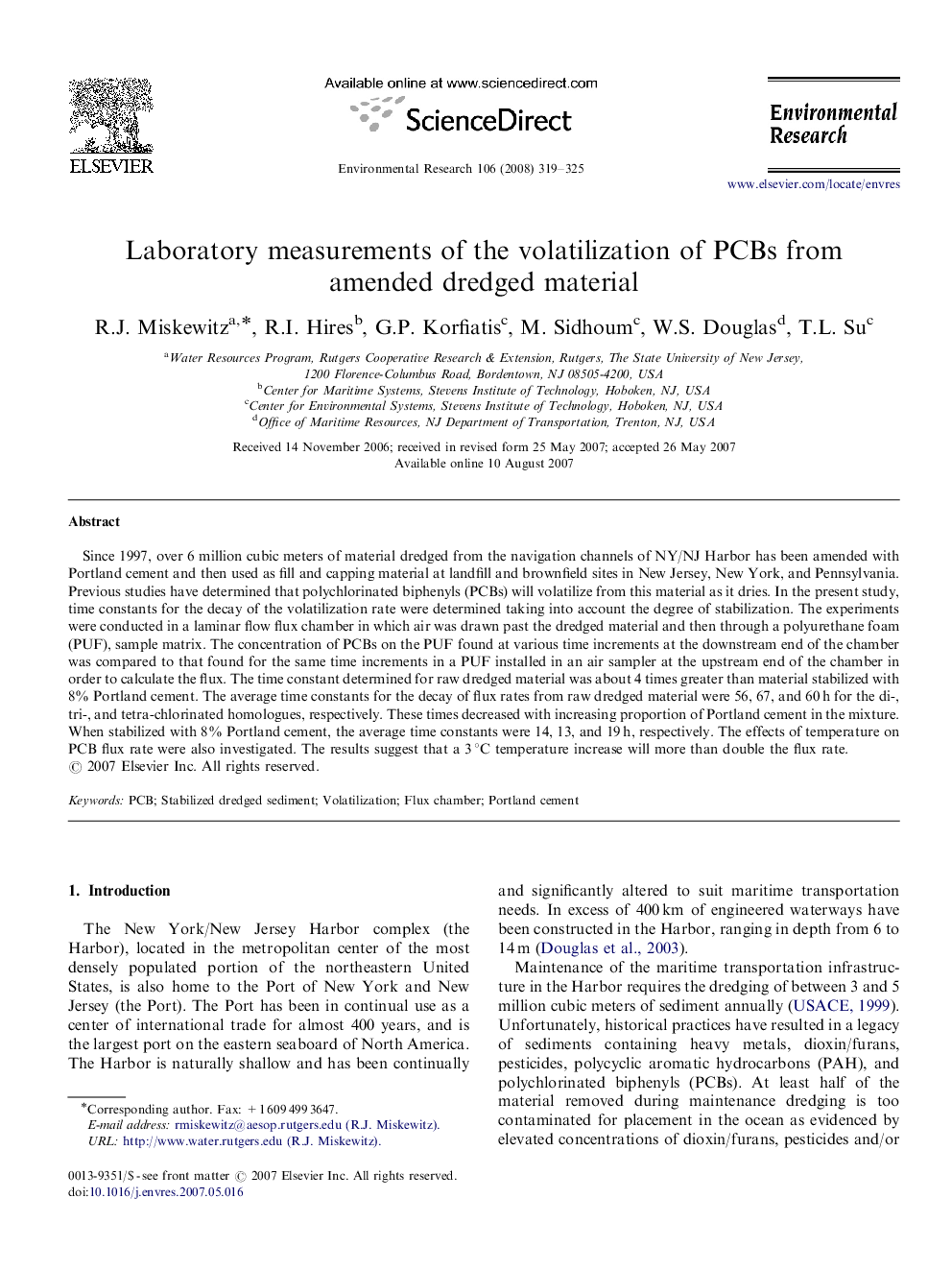| Article ID | Journal | Published Year | Pages | File Type |
|---|---|---|---|---|
| 4470761 | Environmental Research | 2008 | 7 Pages |
Since 1997, over 6 million cubic meters of material dredged from the navigation channels of NY/NJ Harbor has been amended with Portland cement and then used as fill and capping material at landfill and brownfield sites in New Jersey, New York, and Pennsylvania. Previous studies have determined that polychlorinated biphenyls (PCBs) will volatilize from this material as it dries. In the present study, time constants for the decay of the volatilization rate were determined taking into account the degree of stabilization. The experiments were conducted in a laminar flow flux chamber in which air was drawn past the dredged material and then through a polyurethane foam (PUF), sample matrix. The concentration of PCBs on the PUF found at various time increments at the downstream end of the chamber was compared to that found for the same time increments in a PUF installed in an air sampler at the upstream end of the chamber in order to calculate the flux. The time constant determined for raw dredged material was about 4 times greater than material stabilized with 8% Portland cement. The average time constants for the decay of flux rates from raw dredged material were 56, 67, and 60 h for the di-, tri-, and tetra-chlorinated homologues, respectively. These times decreased with increasing proportion of Portland cement in the mixture. When stabilized with 8% Portland cement, the average time constants were 14, 13, and 19 h, respectively. The effects of temperature on PCB flux rate were also investigated. The results suggest that a 3 °C temperature increase will more than double the flux rate.
